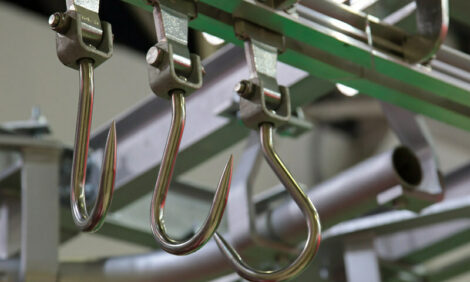



Thailand Bites into Brazilian Chicken Exports
THAILAND - Thailand looks set to return to a leading position in the global poultry market after the EU announced that it will end restrictions on imports of raw poultry meat from Thailand on 1 July 2012.The end of the ban could cut prices for consumers at a time when they have been hard hit by inflation in other foodstuffs.
These are some of the main conclusions coming out of a new report from Rabobank, ‘The Return of Thai Raw Chicken - Global players need to change strategy’.
The restrictions on one of the world's major poultry exporters followed an outbreak of bird flu in the country in 2003.
Japan also stopped importing Thai raw poultry and is widely expected to lift its own restrictions. Brazil is set to be particularly hard hit as it is currently the major supplier to both Japan and Europe.
The 2003 ban saw the poultry sector in Thailand lose 350,000 tonnes of export volume out of a total of 500,000 tonnes and suffer from years of overcapacity.
However, in recent years the industry has shifted its strategic focus to cooked processed poultry meat, for which exports were allowed. This strategy was so successful that the industry once again reached full capacity in 2010/2011, resulting in a first wave of investments.
The re-opening of the EU and Japanese markets could see Thailand's raw chicken production grow by 20 per cent by 2015.
The EU and Japan have long favoured Thai products for their high quality and low prices.
"Thailand's return to the market will lead to a new wave of investment in the Thai poultry industry as it might offer new growth opportunities," said Nan-Dirk Mulder of Rabobank Food and Agribusiness Research and Advisory.
In the EU, an expected influx of 92,000 tonnes of chicken on to the market is expected to significantly increase price competition between suppliers of raw chicken from Thailand and Brazil, and to a lesser extent Argentina, with consequently lower prices.
The EU market for fresh meat - and the local players involved in it - will be relatively unaffected because labeling standards make importing fresh meat economically unviable.
In Japan, the return of Thailand to the market will give traders more options to source products, again to the detriment of Brazil.
Japanese imports of Thai raw chicken are set to reach up to 150,000 tonnes within a few years, with imports from Brazil falling from 350,000 tonnes to 250,000 tonnes and lower prices all round, Rabobank believes.
For Brazilian producers the stakes are high. EU and Japan represents both12 per cent of Brazil's total exports based on volume, although the both region's importance in value terms is significantly higher.
Meanwhile, despite the boost from the lifting of the EU ban, Thailand needs to focus on reducing risks in the industry, Rabobank says.
The bird flu outbreak starkly illustrated the risks of being mostly focused on raw meat and the increased proportion of cooked meat products will help in the event that bird flu returns to Thailand, a country where the disease is endemic, according to the Rabobank report.
Currently, its export profile is 95 per cent cooked meat to five per cent raw meat which will move to 70 per cent cooked to 30 per cent raw if it can regain its position in Japan and the EU. But a recurrence of bird flu and subsequent import bans from the EU and Japan could mean the industry will have 20 per cent overcapacity at a stroke.
"A well-balanced approach to dealing with the constantly present possibility of an avian influenza outbreak is the base for a strong international position," said Mulder.
"An ongoing emphasis on biosecurity will be key."
To lower its risk, Rabobank believes the Thai poultry industry could:
- Further strengthen and prioritise the country's position as the world's leading cooked meat exporter - pushing growth in raw meat volumes without also investing in primary processing capacity could increase costs for Thailand's processed chicken plants if prices rise
- Keep emphasising the strength of the compartmentalisation model in global and bilateral trade negotiations - this makes sense from a veterinary perspective but it has been difficult to implement globally.
- Diversify the country's export portfolio, which is currently overwhelmingly focused on the EU and Japan - 90 per cent of Thailand's exports go to these two markets. It needs to establish itself in other markets, particularly in Asia and the Middle East.
- Internationalise the industry's business model by investing in production and distribution facilities in leading markets such as China and the EU, something that companies such as CP Foods and Bangkok Ranch have already done.









